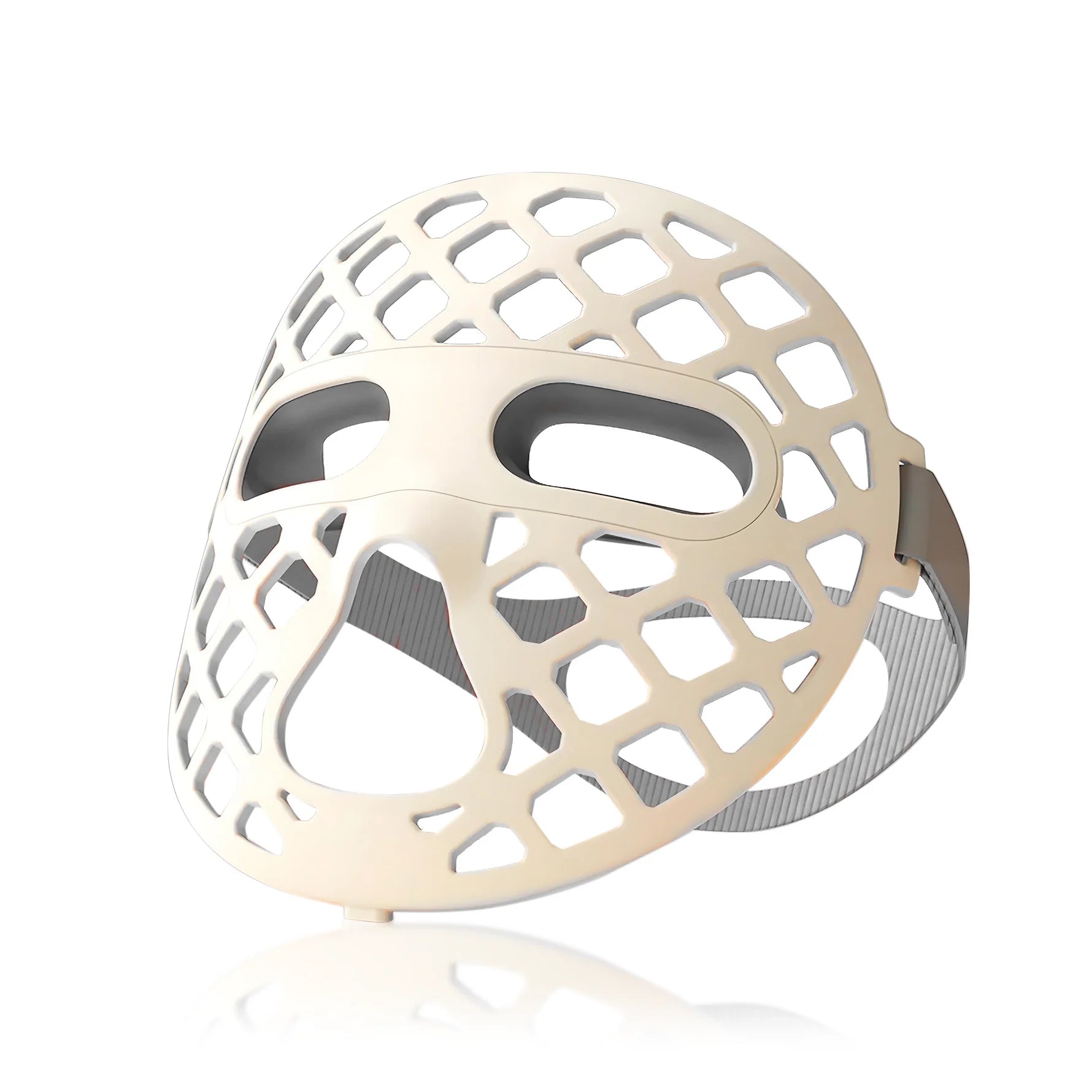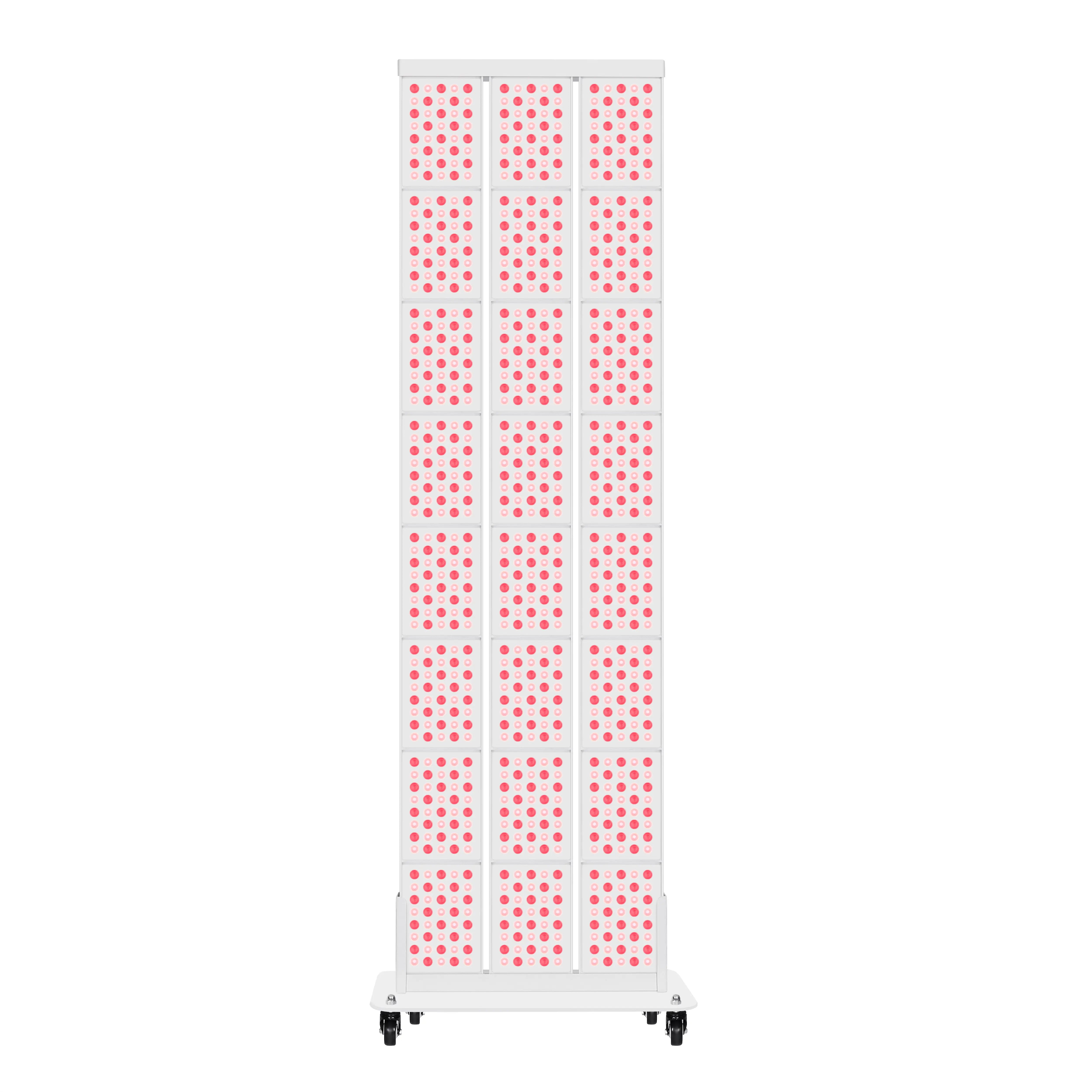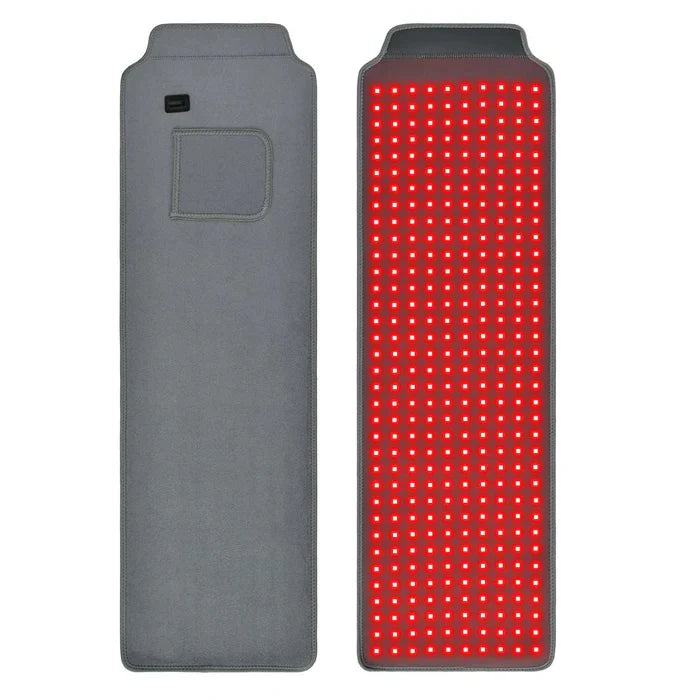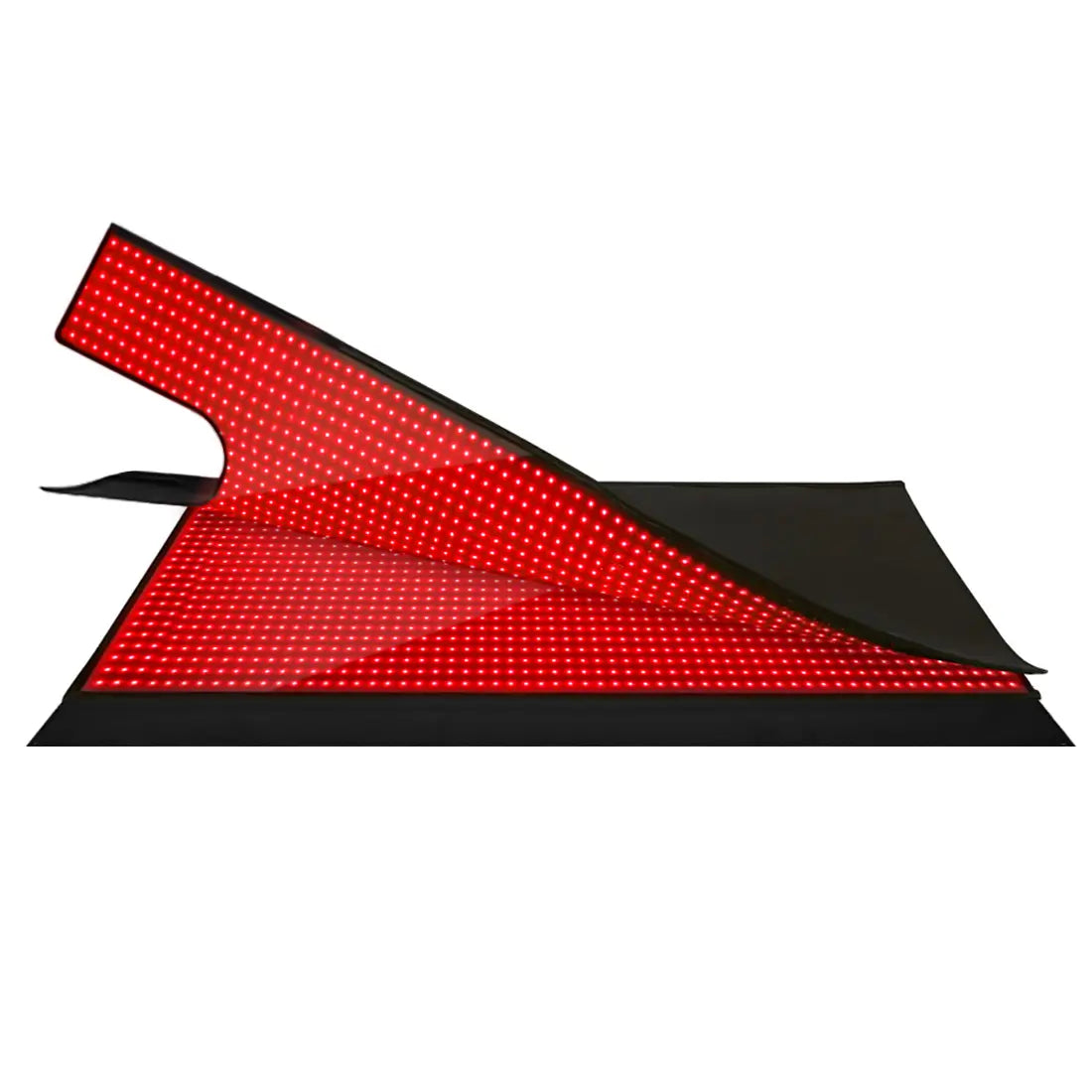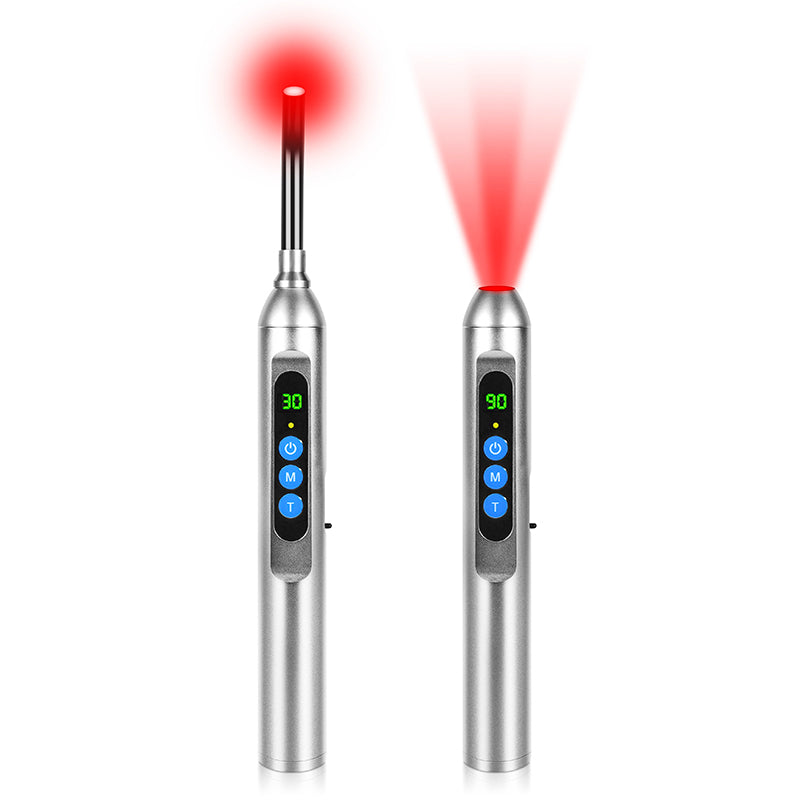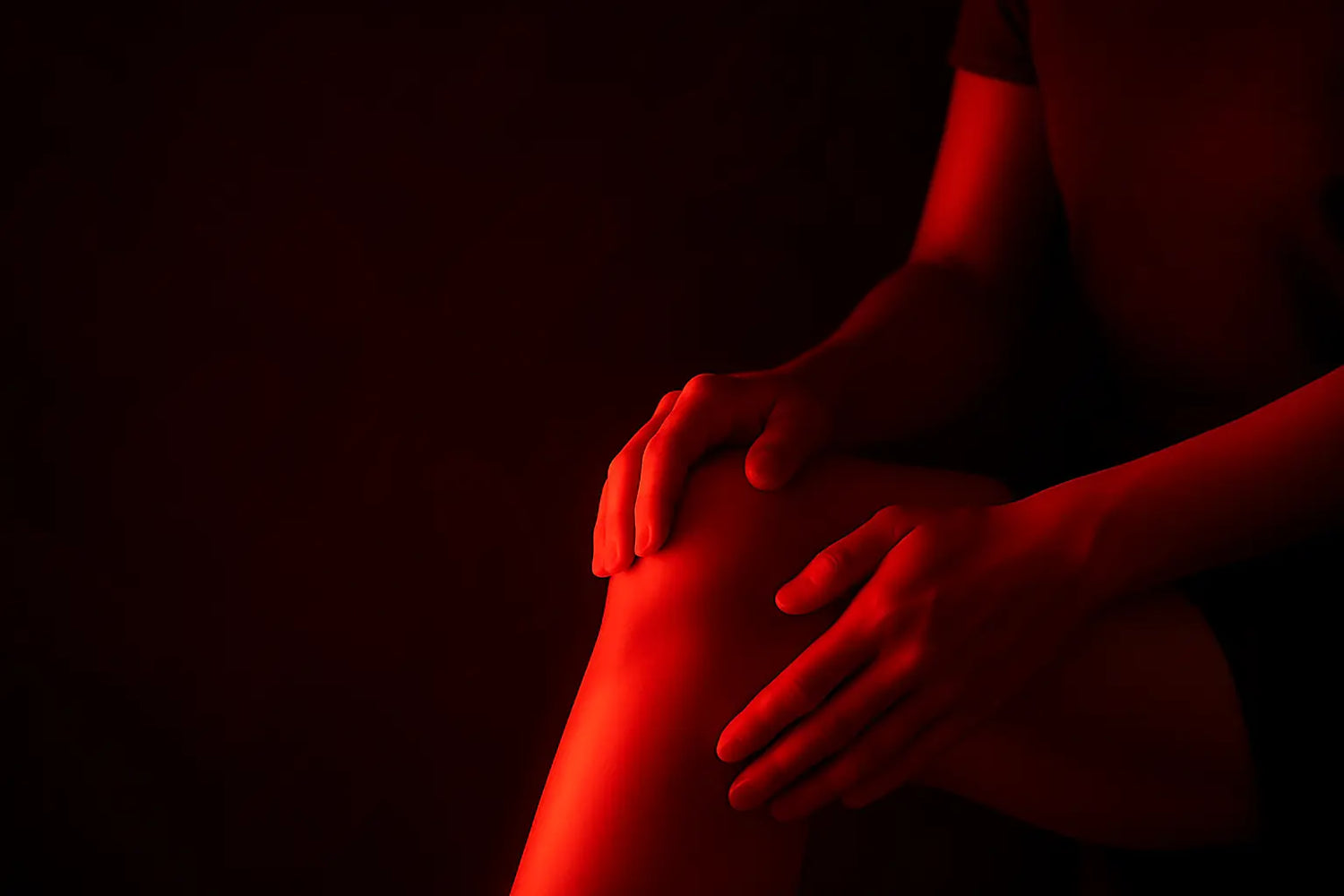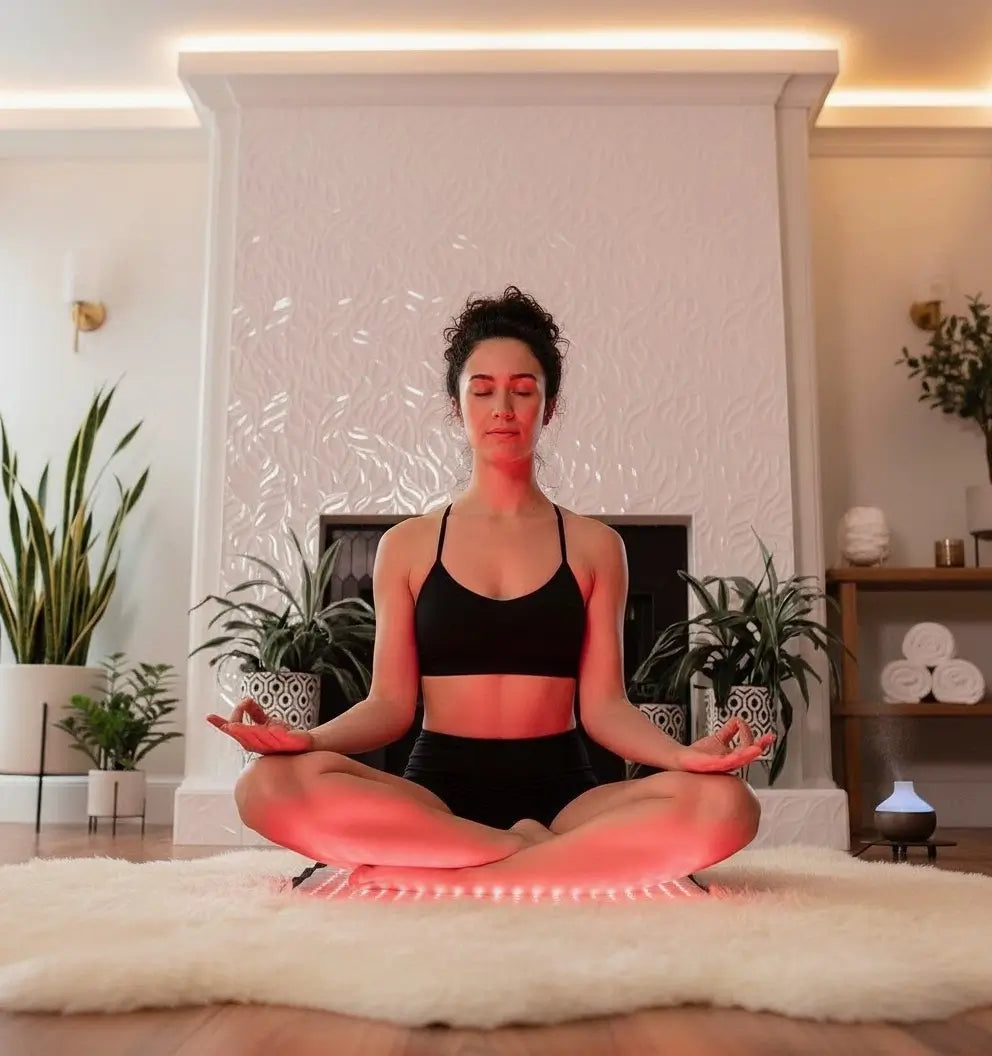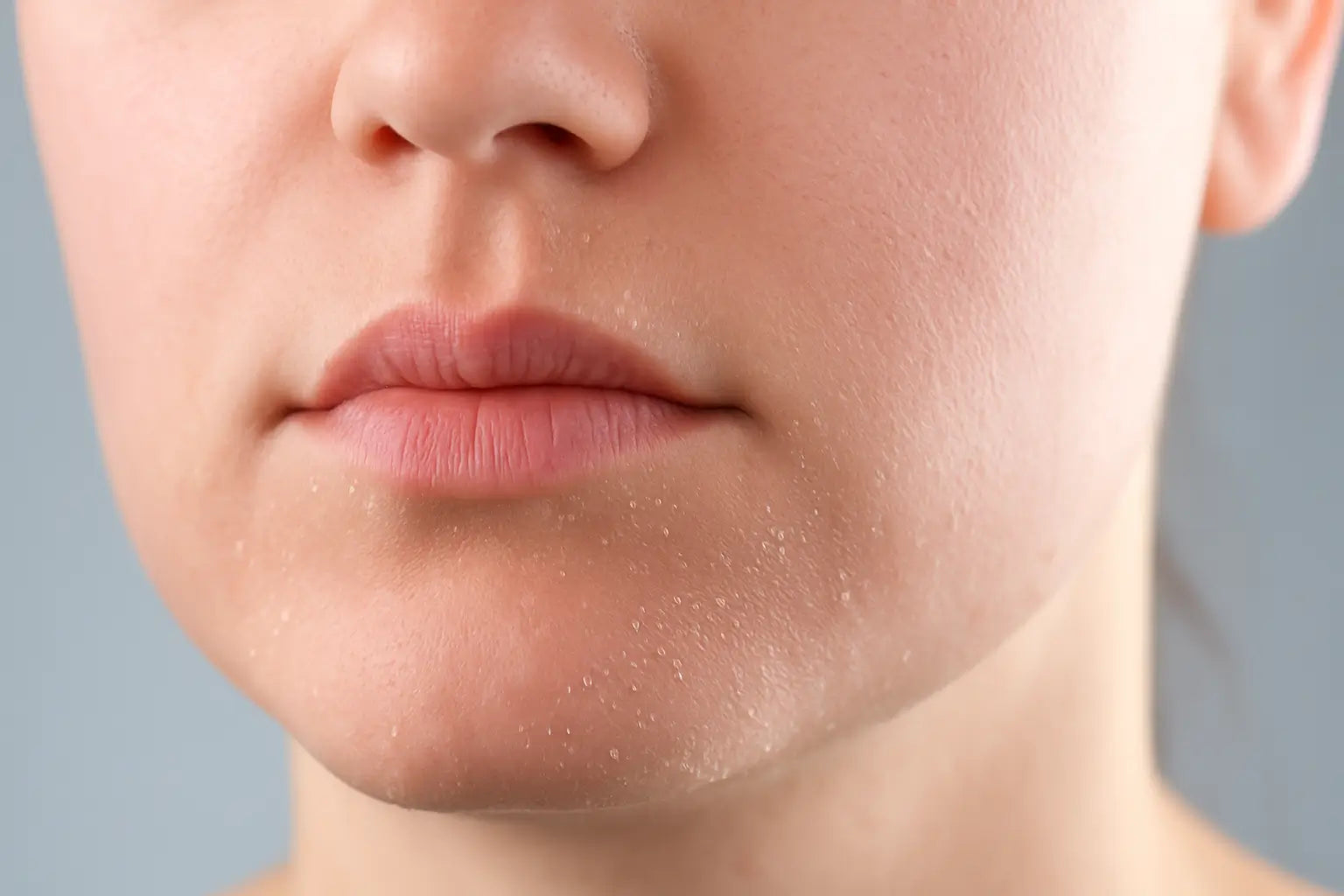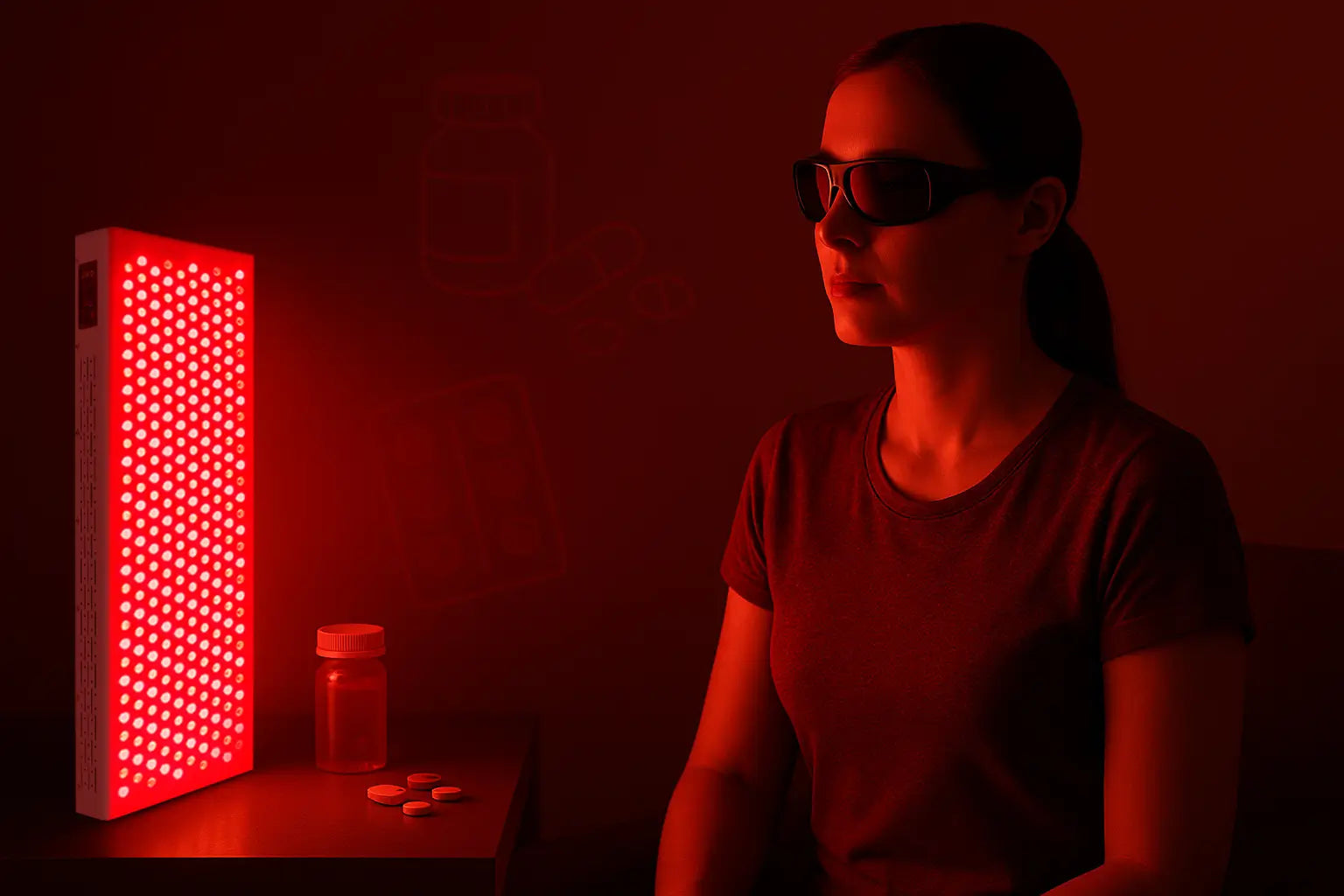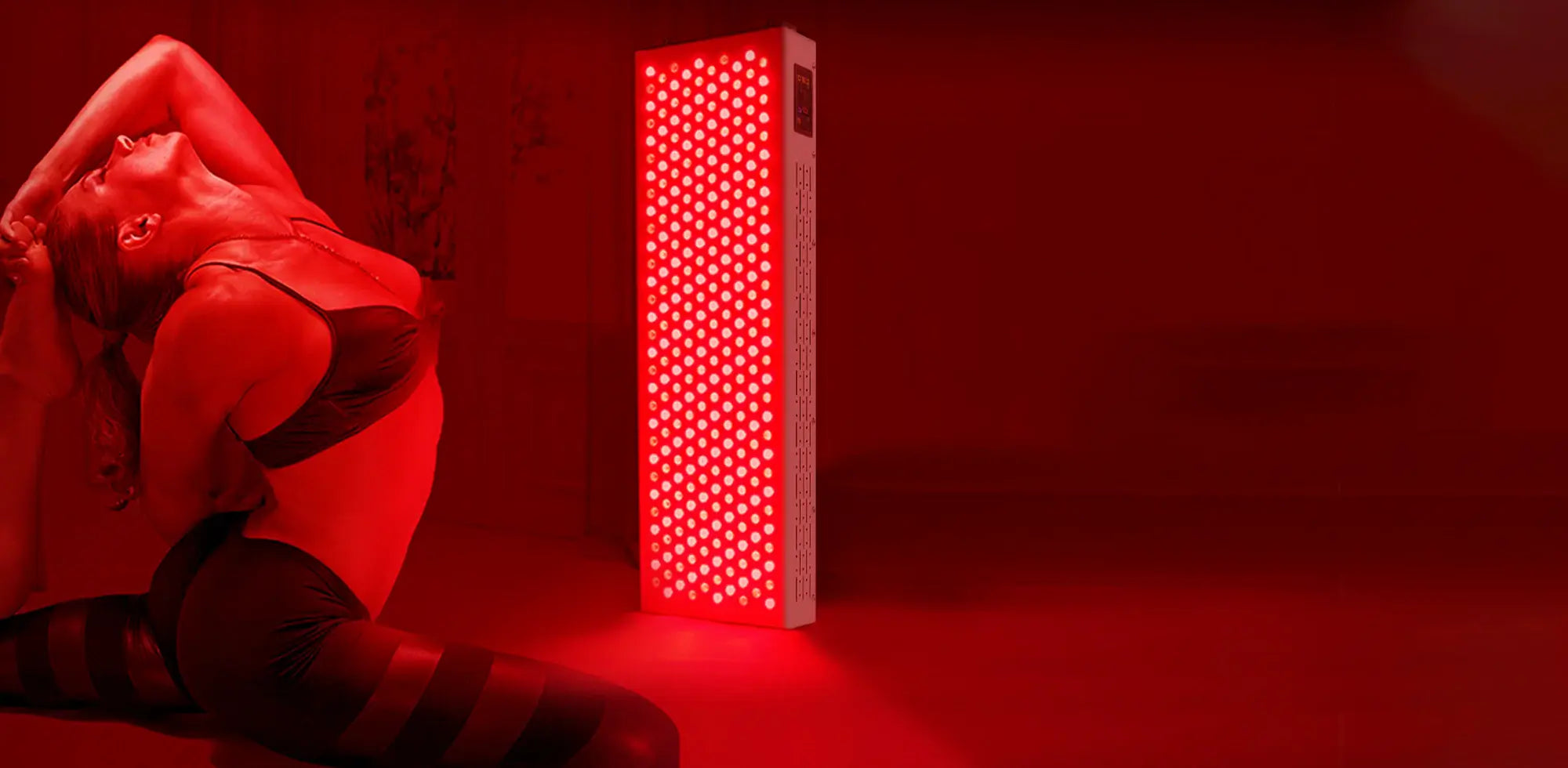Inflammation steals comfort and slows daily life. Stiff joints after work, an acne flare before a meeting, a small cut that lingers. Many people now add light-based care to their routine at home. Is red light therapy anti-inflammatory? The evidence points in a helpful direction when the plan uses the right wavelengths, a sensible dose, and steady sessions. This guide gives clear steps for red light therapy for inflammation that fit a normal week and a normal budget.
TL;DR
- Is red light therapy anti-inflammatory? In many use cases, it helps calm inflammatory activity and ease symptoms.
- Best wavelengths: red around 660 nm and near infrared around 850 nm.
- Starter dose: skin 4–10 J/cm²; tendons or small joints 10–20 J/cm²; large joints 20–40 J/cm².
- Frequency: 3–5 sessions each week, then reassess after 2–4 weeks.
- Safety: protect eyes, keep skin clean, ask a clinician first if photosensitive or on photosensitizing drugs.
What Is Inflammation and Why Does It Matter for Red Light Therapy?
A clear view of inflammation helps you judge any therapy. Acute responses clear debris and start repair. Trouble begins when low-grade inflammation lingers. Joints feel tight, skin looks reactive, and recovery slows. People ask for options that ease this activity without downtime. Red light therapy fits that need because it targets cellular energy and signaling linked to inflammation.

How Does Red Light Therapy Reduce Inflammation at the Cellular Level?
A simple framework explains why people feel better with consistent red light therapy sessions. Light in specific bands interacts with cellular photoacceptors, improves energy status, and reshapes inflammatory signaling. Keep the focus on parameters you can control at home.
- Mitochondria and 660 nm + 850 nm: Cells absorb 660 nm red and 850 nm near infrared at cytochrome c oxidase. ATP production rises, and the membrane potential improves. This upstream change sets the tone for tissue repair.
- Oxidative stress balance: Inflamed tissue carries high reactive oxygen species. Red light therapy helps restore balance in ROS and nitric oxide signaling. Responses follow a biphasic curve, so moderate energy often works best.
- Cytokine modulation: Red light therapy can lower pro-inflammatory signals such as TNF-α, IL-1β, and IL-6 in many models. Immune cells tend to shift toward a pro-resolution pattern that supports comfort and function.

What Inflammation Can Red Light Therapy Help With?
Users want to know where red light therapy for inflammation is most practical. The table below summarizes common goals, placement tips, and what a realistic outcome looks like in daily life.
| Use case | What to expect | Placement and coverage | Evidence snapshot |
| Joints and muscles | Less pain, more comfortable range of motion over several weeks | Aim at the painful area plus nearby muscles and tendons | Generally positive when wavelength, irradiance, and dose are declared |
| Skin inflammation | Calmer redness and better barrier comfort in routine care | Treat clean, bare skin, remove heavy products first | Supportive as an adjunct in daily skincare |
| Wound healing support | Smoother progress on minor cuts and scrapes under clean care | Follow hygiene steps, then apply light at a modest distance | Broadly favorable as a complement to standard care |

What Does Research Say About Red Light Therapy’s Anti-Inflammatory Effects?
People often ask the core question again: Is red light therapy anti-inflammatory according to research? Across laboratory models and human trials, anti-inflammatory effects appear repeatedly, yet the strength of benefit depends on the condition and protocol. Stronger trials declare wavelength, irradiance at the skin, energy density in J/cm², timing, and frequency. Studies that omit these details look mixed. Treat your home plan like a simple study, write down parameters, and review progress every two to four weeks.
How to Use Red Light Therapy for Inflammation Safely and Effectively
This section turns science into steps. You will choose a device that matches known parameters, set the distance and time to reach a target energy, and schedule red light therapy sessions you can keep doing.
How to choose the right device with 660 nm and 850 nm
- Confirm the device lists both 660 nm and 850 nm to cover surface and deeper targets.
- Check the irradiance at a stated distance, since that number drives dosing.
- Choose a unit with uniform output, a reliable timer, and clear instructions to simplify daily use.
- Use a larger panel for the spine and hips.
- Use a compact panel or red light mask for small zones such as the jaw, wrist, or a patch of skin.
What dose and distance work best for inflammation
Start with a moderate target and hold it steady. Energy density captures power and time, so it is the number that links device specs to tissue response. Use these ranges as a starting map for red light therapy dosing.
| Target depth | Wavelengths | Distance | Irradiance range | Energy per session | Typical time |
| Surface skin | 660 nm, optional 850 nm | 6–12 in | 10–30 mW/cm² | 4–10 J/cm² | 5–10 min |
| Tendons, small joints | 660 nm + 850 nm | 6–10 in | 20–60 mW/cm² | 10–20 J/cm² | 8–12 min |
| Large joints, deep tissue | 660 nm + 850 nm | 6–8 in | 40–80 mW/cm² | 20–40 J/cm² | 10–15 min |

Practical tips for red light therapy for inflammation:
- Treat clean, dry skin. Thick lotions can reflect light.
- Keep the red light panel square to the target area.
- Log comfort scores, range of motion, sleep quality, and session details.
- Use nonconsecutive days in the first weeks. Adjust only after you see a trend.
How often should you use red light therapy sessions?
Consistency drives outcomes. Begin with three to five sessions each week for two to four weeks. Move to maintenance at two or three sessions each week. If a flare returns, step back up for a short period. Stop increasing time once you reach the target energy. Progress comes from rhythm and adherence.
Is Red Light Therapy Safe for Inflammation and Who Should Avoid It?
Safety supports consistency. Red light therapy shows a strong safety profile for healthy adults when used as directed. Wear eye protection around panels, since near infrared is invisible yet intense. People with photosensitive conditions should ask a clinician before starting. The same applies to anyone on photosensitizing medication, those with active skin cancer, or a history of seizures. During pregnancy, discuss plans with a healthcare professional. Avoid shining intense light on hot, infected, or actively bleeding wounds.
Why Do Results Vary With Red Light Therapy for Inflammation?
Different plans produce different outcomes. Three drivers explain most variation.
- Parameters define the dose at the skin. Wavelength, irradiance, energy density, and distance decide how much light reaches the target.
- Tissue optics change penetration and scatter. Skin tone, hair, scars, and hydration matter in practical ways.
- Adherence shapes the signal that tissue receives over time. A simple, stable setup delivers clearer gains than frequent changes.

So, Is Red Light Therapy Anti-Inflammatory?
Yes, for many practical goals when the plan is specific and consistent. Red light therapy can calm inflammatory activity at the cellular level and help people feel better in daily life. The checklist below keeps things actionable.
Quick start checklist
- Choose a device labeled 660 nm and 850 nm with declared irradiance at a specific distance.
- Set the panel 6–12 inches from the target and keep the same setup each session.
- Use the dosing table to hit the energy range for your goal, then time sessions to match.
- Schedule red light therapy three to five times each week for the first month.
- Protect the eyes and keep skin clean.
- Track changes in comfort and function, then adjust gradually.
People who arrive with the question Is red light therapy anti-inflammatory leave with a plan that fits real life. With steady sessions, red light therapy for inflammation can support calmer joints, clearer skin, and smoother recovery.


